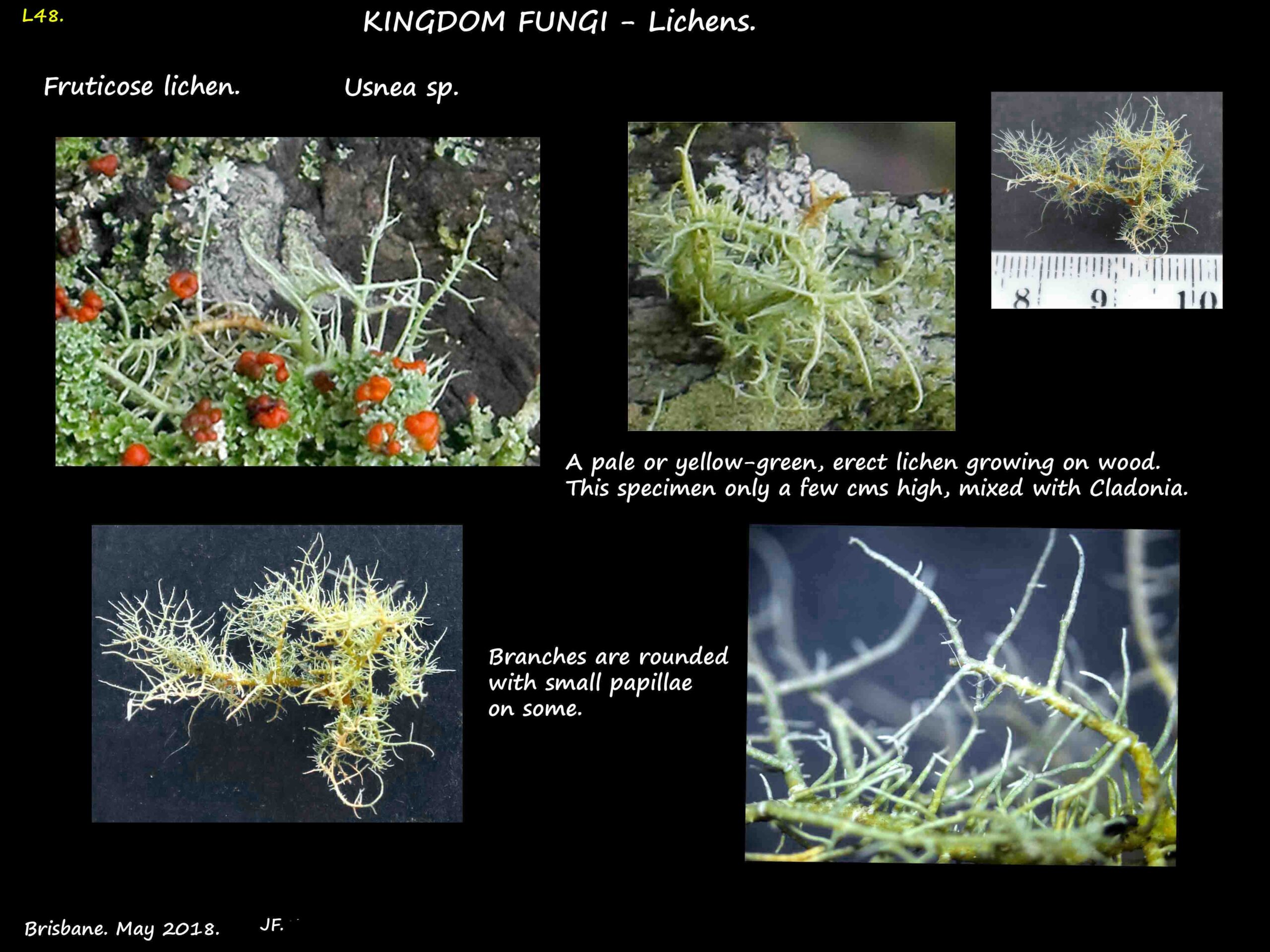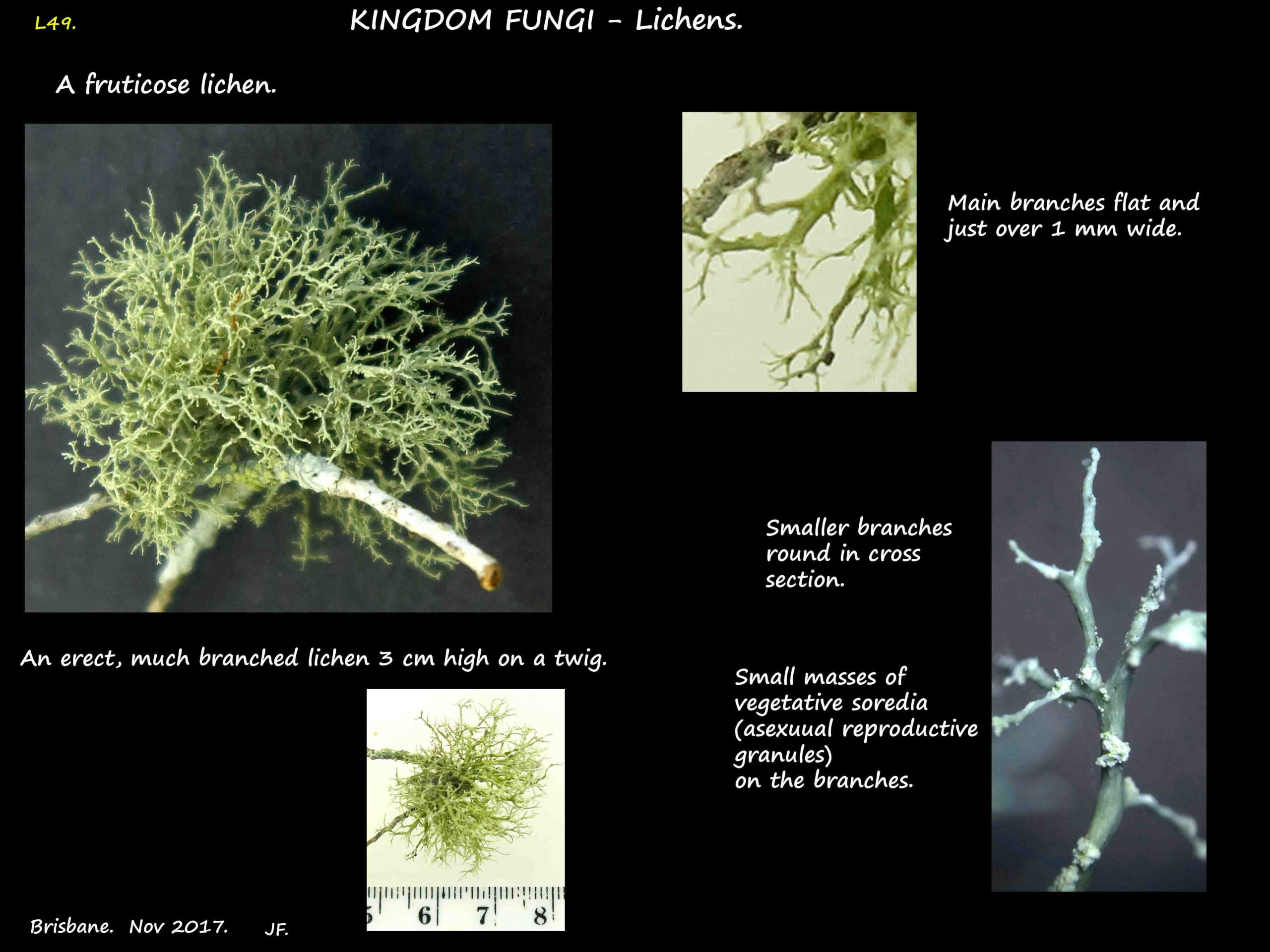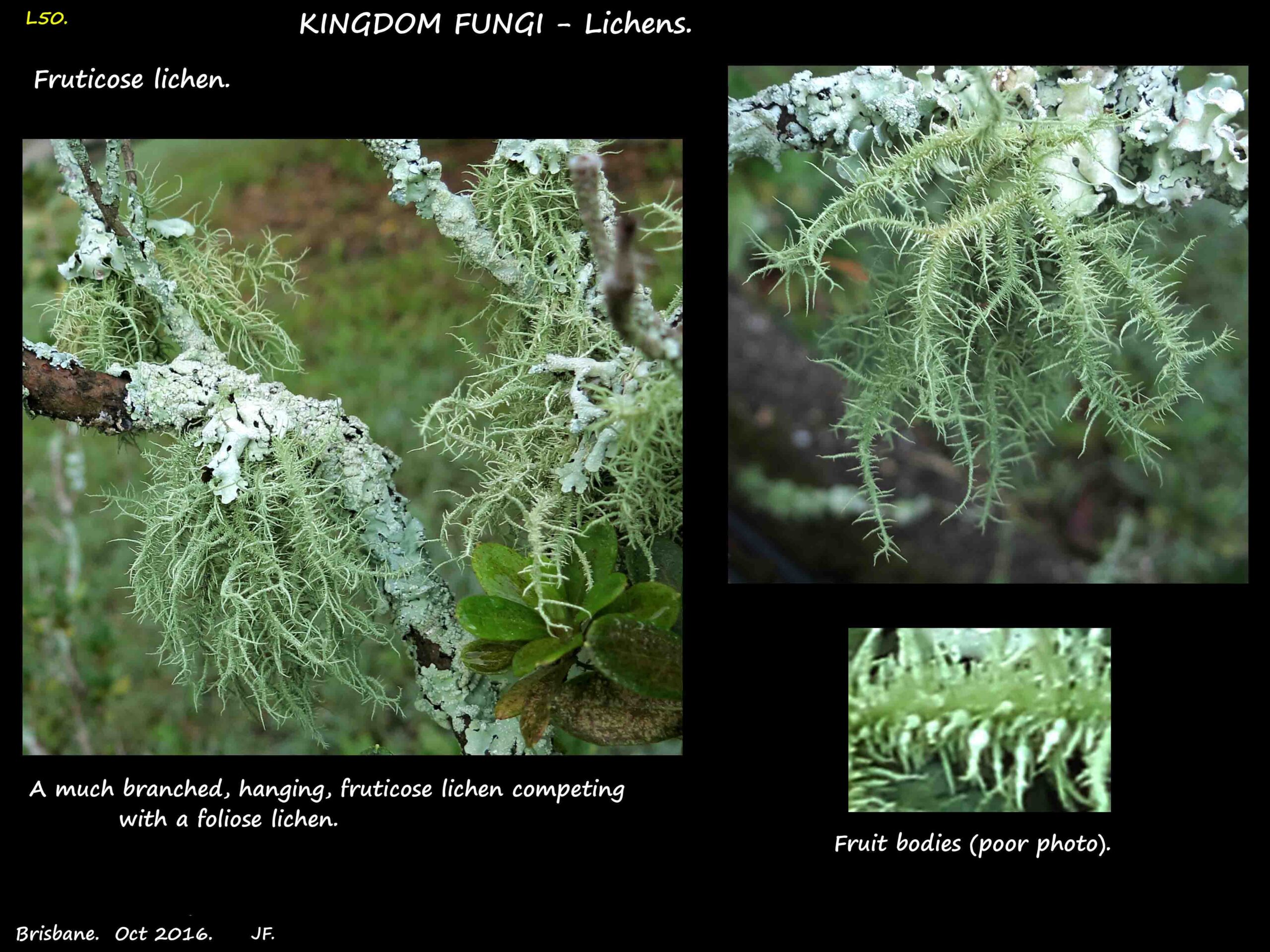Fruticose lichens – Usnea & Letharia.
Ascomycota > Lecanoromycetes > Lecanorales > Parmeliaceae.
Usnea.
The exact number species is unknown but there are hundreds.
They are erect, shrub-like fruticose lichens that grow on trees in well lit situations.
Most are a pale or greyish-green with some a pale yellow-green.
The thallus can be a few cms up to 20 cm long.
The trunk may be pale or black and the branches are roughly cylindrical.
Primary branches are only a mm or two wide and the pattern of branching is variable.
The end branches can be short and dense with tapering tips.
Most branches have tiny papillae on them.
There are no soralia and apothecia are rare or absent.
Isidia range from nil to dense, occur on the tertiary branches and beyond and often have a black tip.
Letharia sp.
Also Family Parmeliaceae.
A fruticose lichen, semi-erect or pendent, from a few cms up to 10 or 20 cm tall.
It is bright yellow, green or greenish-yellow but paler if dried and the older branches may be a greenish-grey.
It is attached by a basal disc and branches irregularly to become dense and tangled.
The main branches, 2 – 3 mm wide, are usually flattened or angular and the smaller ones are rounded.
The tips may be pointed and darker.
Soredia are dense and may resemble isidia, but may also be absent.
Isidia may be absent or there may be just a few that are simple or branched.
There are other genera of fruticose lichens.
J.F.




